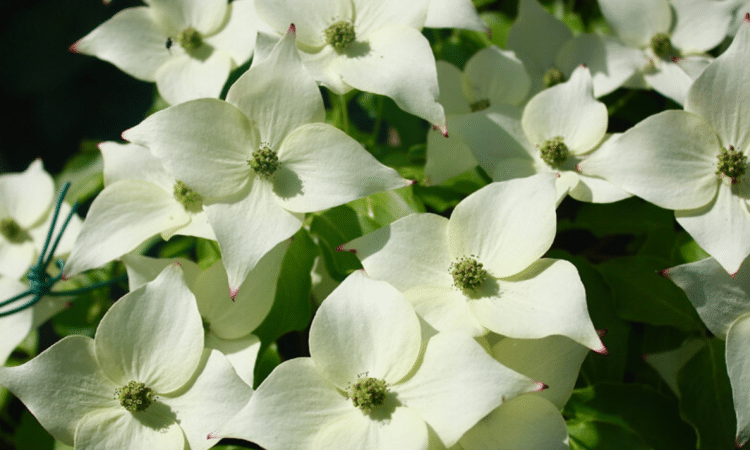The Japanese dogwood is a great addition to any garden. When it blooms, you’ll be blown away.

When looking for an attractive tree species for your garden, you will definitely end up with a Japanese dogwood. Its loose habit, giant spring flowers, red berries, beautiful autumn leaf colour and the unique mottled bark that adorns the tree during winter will add aesthetic value to your garden all year round.
The genus Cornus (dogwood) includes a wide variety of trees and shrubs. Some have winter flowers, others offer stunning late spring foliage, colourful winter stems, striking autumn foliage or berries. Today we’re focusing on the Japanese dogwood (Cornus kousa var. Chinensis), which is also known as the Japanese candle.
This species is native to East Asia – China, Korea or Japan and is considered one of the most prolific flowering of the dogwood group. For simplicity, the Japanese dogwood is often referred to as Cornus kousa, although this can be somewhat confusing. Therefore, it is important to note the exact botanical designation when purchasing and look for Cornus kousa var. Chinensis.
The beauty of Japanese dogwood
This shrub has an upright habit that expands with age. The main attraction is the show of large creamy white flowers that appear in early summer. Although this is also inaccurate. What the dogwoods adorn in spring are actually palm-sized fronds that surround small, somewhat nondescript flowers that look like yellow-green clusters of balls.
These later form red berries similar to strawberries. They are edible, but have no interesting flavour. In Japan they are eaten raw, pickled or made into fruit liqueur. The leaves are green and rounded, turning a beautiful red and purple in autumn.
Where to grow Japanese dogwood
The flowering of the Japanese dogwood is so unique that these woody plants are usually planted as solitary shrubs. They are particularly effective as a backdrop in shrub beds, as they reach 6-8 metres at maturity. When combining them with other flowering shrubs, you should take care not to choose a tree that flowers at the same time as a neighbour, so that they do not steal attention from each other.
In the wild it is found on woodland edges and river banks, so it will also appreciate a sheltered spot in full sun or partial shade in the garden.
Planting Japanese dogwood
Soil is the alpha and omega of its cultivation. It thrives best in light, sandy loam, slightly acidic soils. What it doesn’t tolerate are waterlogged and calcareous soils, and it often does poorly in heavy, loamy soils.
Containerised plants can be planted at any time of the year as long as it does not freeze. However, spring is the best time; if planting in autumn, protect the roots from frost with a higher layer of mulch for the first few years.
The top of the root ball should be flush with the soil. If the soil is not acidic enough, the substrate in the planting hole should be acidified with rhododendron soil or leaf compost. It is always advisable to add compost to the soil, as all dogwoods visibly thrive better in humus-rich soil.
Tips on how to grow Japanese dogwood
- Overall, this shrub is very low maintenance. Once established, it is frost, heat and drought resistant. However, as a slow-growing woody plant, it takes a long time to become established, so keep the soil around it moist for at least 3-4 years after planting.
- A layer of mulch or an underplanting of low-growing herbs will help retain moisture at the roots. Adding ground hornworm castings in spring will enrich the soil with nitrogen.
- Avoid hoeing around the roots to avoid damaging them, as dogwood roots quite shallowly. This will allow the shrub to become more beautiful and flower more profusely over the years.
- Japanese dogwood does not need pruning as it grows slowly. In addition, pruning has no effect on flower development. On the contrary, it thickens the plant and deprives it of its unique, airy habit.
- Corrective pruning is only recommended for young plants to encourage harmonious crown development. Nuisance branches can also be removed at any time from older plants, preferably immediately after flowering.
- Japanese dogwood is very resistant to disease. Occasionally, fungal infestation or leaf spotting occurs. In general, pests are rarely, if ever, found on this beautiful flowering shrub.
Propagation of dogwood
Native species of Japanese dogwood are propagated by cuttings or by sowing seeds, but this is very time-consuming. However, hybrids, which are often found commercially, can only be propagated by grafting.

